COMPSAC 2023 Symposium on Smart IoT Systems & Applications (SIoT)
Technical Program
*= in-person presentation in Torino
Toward a Labeled Dataset of IoT Malware Features*
Stian Olsen and Tj Oconnor
Secure Feedback to Edge Servers in Distributed Machine Learning Using Rich Clients*
Saki Takano, Akihiro Nakao, Saneyasu Yamaguchi and Masato Oguchi
Plain Source Code Obfuscation as an Effective Attack Method on IoT Malware Image Classification
Hayato Sato, Hiroshi Inamura, Shigemi Ishida and Yoshitaka Nakamura
IoT-based scientific research has recently become an imperative component in monitoring human daily lives and leveraging the enabling technologies including smart objects, smart sensing, cloud and edge computing, and big data analytics. The IoT has created an explosion of sensor data due to the increased number of smart devices with embedded smart sensors. This ranges from smart watches and smartphones to healthcare wearable and head-mounted devices. The recent increase in availability and use of smart wearable devices and the ubiquity of smartphones allows the ability of caregivers to monitor health conditions on a continuous basis. Many of the smart-wearable devices are part of human-in-the-loop Cyber Physical Systems (CPS). The Internet has changed drastically the way we live, moving interactions between people at a virtual level in several contexts spanning from the professional life to social relationships. The IoT has the potential to add a new dimension to this process by enabling communications with and among mobile phones and smart devices, thus leading to the vision of obtrusiveness or in other words ‘‘anytime, anywhere” computing and communications. Additionally, the IoT is a key enabler for the realization of future embedded smart world as it allows for the interaction with/between the tiny smart things leading to an effective integration of information into the digital world. The basic idea of this concept is the pervasive presence around us of a variety of things or objects – such as tiny sensors, actuators, smartphones, u-things, etc. – which, through unique communication and interaction schemes, are able to communicate with each other and cooperate with their neighbors through wireless communication to provide quality services for users. The challenges and opportunities arising from a proper integration of the IoT with mobile computing and applications create a fascinating research field that deserves more in-depth investigations. On the one hand, wearable devices are expected to become the joining link between connected smart objects, the Internet, and end-users. Thus, the coupling among mobile technology, such objects and an embedded infrastructure constitutes the Mobile and Embedded Internet of Things. The smart IoT has the potential to revolutionize future software and hardware applications by influencing the real world entities to achieve better quality of life for next generation of human.
The aim of this symposium is thus to bring together practitioners and researchers from both academia and industry in order to have a forum for discussion and technical presentations on the recent advances in the area of smart embedded IoT. It furthermore serves as a forum for the research community to discuss open issues, novel solutions and the future development of IoT applications. Submissions could consist of theoretical and applied research in topics including, but not limited to:
1) System architectures for the IoT targeted to application scenarios,
2) Wireless Energy Harvesting for the Internet of Things,
3) Security and privacy in embedded IoT scenarios,
4) Interoperability of protocols for IoT,
5) Context awareness in the smart IoT,
6) Experiences in building smart wearable IoT platforms,
7) Embedded systems and applications built using IoT,
8) Enabling technologies and standards for the IoT,
9) Routing protocol for low power and lossy networks (RPL) in IoT,
10) Power consumption and optimization in embedded IoT, and
11) Fault-tolerance and reliability in embedded IoT applications,
12) Middleware and platforms for embedded IoT applications.
13) Social and organizational aspects on smart IoT systems development
14) University education and industrial training for smart IoT systems development
The symposium seeks original, unpublished high impact research manuscripts on all topics related to the development of embedded IoT. Papers will be selected on the basis of novelty, technical merit, presentation effectiveness and impact of results.
Paper Templates
IEEE Paper templates are available in MS Word 2003 and LaTex. All submissions must use US 8.5×11 letter page format.
Important Dates
Main Conference/Symposium
Main conference/symposium papers due: 15 January 2023Extended to 15 February 2023
Notification: 7 April 2023
Camera-ready and registration due: 7 May 2023 Updated: 18 May 2023
Journal then Conference Submissions
Due date: April 7, 2023
Notifications: April 30, 2023
Workshops, Fast Abstract, SRS Programs
EXTENDED: Workshop papers due: 21 April 2023
UPDATED: Notifications: 7 May 2023
UPDATED: Camera-ready and registration due: Updated: 18 May 2023
Submission Link
Please submit your paper on EasyChair
IEEE Conference Publishing Policies
All submissions must adhere to IEEE Conference Publishing Policies.
IEEE Cross Check
All submission will be screened for plagiarized material through the IEEE Cross Check portal.
Symposium Chairs
Jiannong Cao, The Hong Kong Polytechnic University
Email: csjcao@comp.polyu.edu.hk
Hironori Washizaki, Waseda University, Japan
Email: washizaki@waseda.jp
Program Committee
Chenxu Wang, The Hong Kong Polytechnic University; Southern University of Science & Technology
Penghui Ruan, The Hong Kong Polytechnic University
Zhiyuan Hu, The Hong Kong Polytechnic University
Jialun Zheng, The Hong Kong Polytechnic University
Junchi Chu, The Hong Kong Polytechnic University

